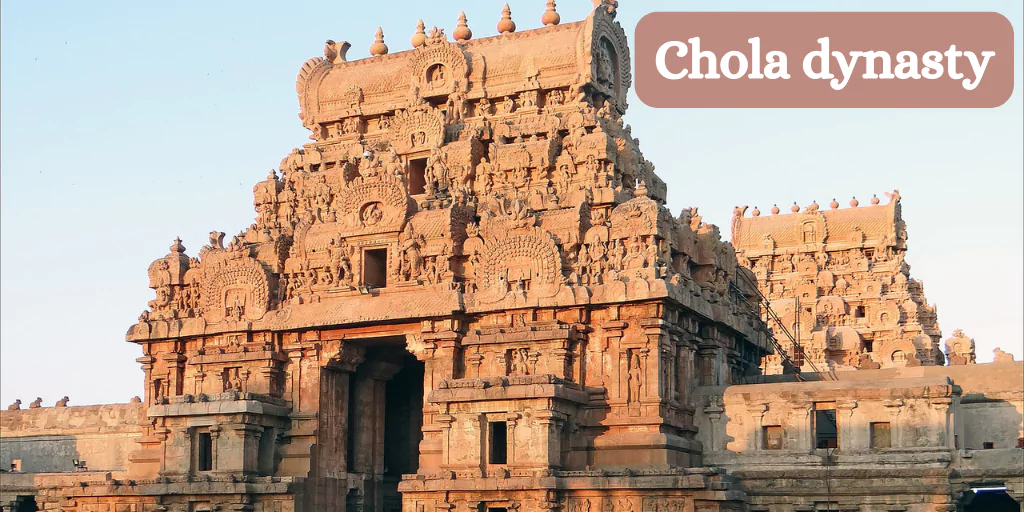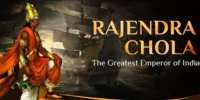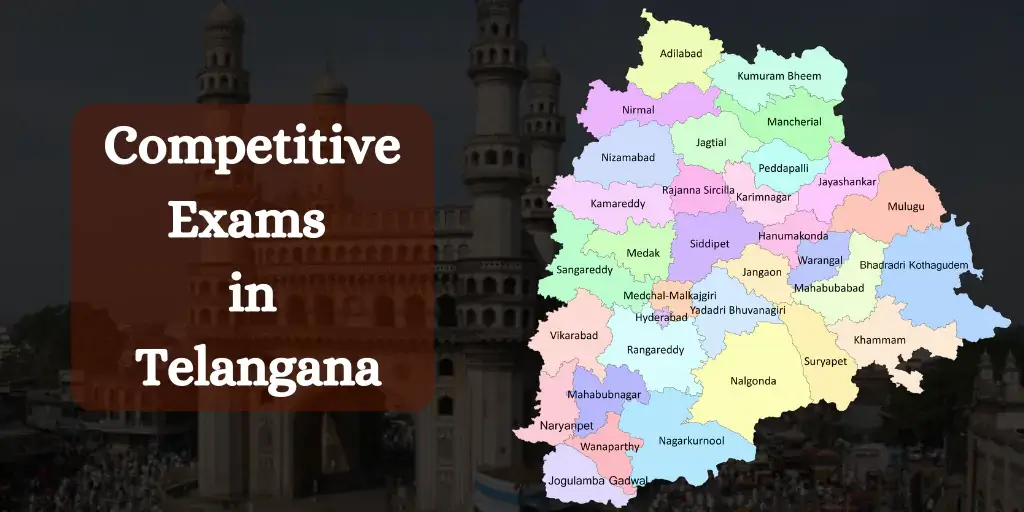Ever wondered how a single dynasty could transform a region so profoundly that its influence still echoes through India’s history exams today? The Chola Dynasty isn’t just another chapter in your UPSC or SSC prep – it’s the empire that rewrote the rules of South Indian governance and architecture.
You’ll discover exactly how the Cholas built their legendary administrative systems and created temple masterpieces that still leave architects speechless today.
Whether you’re cramming for prelims or searching for that perfect Chola Dynasty example to drop in your mains answer, this guide breaks down everything you need to know about their political innovations and architectural genius.
But here’s what most study materials won’t tell you about the Cholas…
1. Origins and Rise of the Chola Dynasty
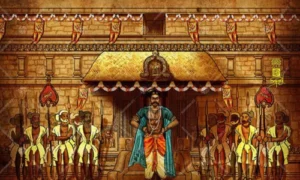
A. Geographical extent and emergence of the Cholas
You’ll find the Cholas originated in the fertile Kaveri River valley (modern Tamil Nadu). They emerged from relative obscurity in the 9th century after the decline of the Pallavas, quickly expanding across South India, Sri Lanka, and parts of Southeast Asia.
B. Key rulers who established Chola supremacy
When studying for UPSC, focus on Raja Raja I (985-1014 CE) and Rajendra I (1014-1044 CE). These two transformed the Cholas into a maritime superpower. Raja Raja captured Sri Lanka while Rajendra’s naval expeditions reached as far as Indonesia, establishing your key conquest timeline.
2. Political and Administrative Structure
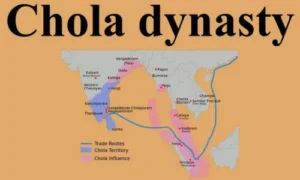
A. Central administration under the Chola kings
When you study the Chola Dynasty, you’ll find their central administration was remarkably organised. The king stood at the apex, enjoying absolute power yet guided by ministers and councils. Your UPSC preparation should focus on how Raja Raja Chola I strengthened this system, creating specialised departments for revenue, defence, and public works.
B. Provincial governance and territorial divisions
The Cholas divided their empire into manageable units you need to remember for your exams. Mandalams (provinces) were broken down into valanadus and nadus. You’ll notice how this hierarchical structure helped maintain control over their vast territory while allowing some local autonomy—a system that made the Chola Empire one of South India’s most efficiently governed states.
3. Military Organisation and Conquests
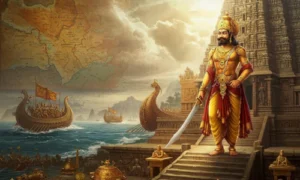
A. Structure and strength of the Chola army
You’ll find the Chola army was impressively organised into infantry, cavalry, and elephant corps. Their military strength wasn’t just about numbers but their disciplined regimental structure that gave them an edge in battles across South India and beyond.
B. Naval power and maritime dominance
Ever wondered how the Cholas controlled the Indian Ocean? Your studies should focus on their advanced shipbuilding techniques and naval strategies. Their maritime dominance wasn’t accidental – they maintained hundreds of warships that projected power from Sri Lanka to Southeast Asia.
4. Chola Architecture: Distinctive Features
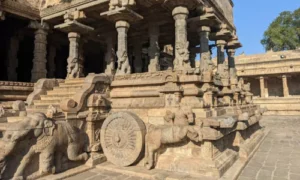
A. Evolution of the Dravidian temple architecture
When you study the Cholas, you’ll notice they took Dravidian temple architecture to new heights. They transformed modest structures into massive stone temples with elaborate gateways (gopurams) and multi-tiered vimanas. You can trace this evolution from the simple Pallava designs to the grand Chola masterpieces that dominated South India’s landscape.
B. Iconic temples of Brihadeeswara, Gangaikonda Cholapuram, and Darasuram
Ever seen the Brihadeeswara Temple? It’ll blow your mind with its 216-foot vimana topped by a massive granite block. At Gangaikonda Cholapuram and Darasuram, you’ll find equally impressive structures, each showcasing unique architectural elements. These UNESCO World Heritage sites perfectly demonstrate why Chola Architecture features remain unmatched in Indian history.
5. Economic Prosperity and Trade Relations
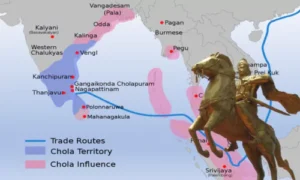
A. Agricultural developments and irrigation systems
You’ll find the Cholas mastered irrigation through an extensive network of tanks, canals, and dams. Their “tank cascade system” turned the Kaveri delta into a rich agricultural hub. Want to ace your UPSC exam? Remember that these systems directly boosted the Chola Dynasty’s economic power.
B. Trade networks and commercial policies
The Cholas weren’t just warriors – they were smart traders too. They established bazaars, marketplaces and created trade guilds called “Manigramam” and “Ainurruvar.” Your UPSC preparation should highlight how these commercial policies connected South Indian markets with Southeast Asia and China.
6. Cultural and Religious Contributions
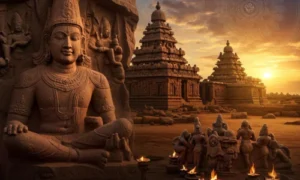
A. Literary developments and patronage of the Tamil language
You’ll find the Cholas were massive supporters of Tamil literature. They funded poets, scholars, and educational institutions, leading to classics like the Ramavataram by Kamban. Their courts buzzed with literary debates and competitions that shaped Tamil literary tradition for centuries.
B. Religious practices and Shaivite influence
When exploring Chola religious life, you can’t miss their deep devotion to Shiva. Your visits to Chola temples would’ve shown elaborate rituals, with priests performing daily ceremonies. The kings themselves often participated in these practices, cementing Shaivism as central to Chola identity.
7. Decline of the Chola Dynasty
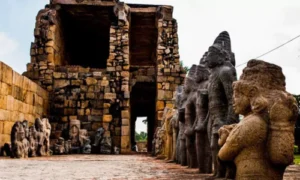
A. Internal factors contributing to the downfall
You’ll find the mighty Chola Empire fell apart partly due to its internal issues. Over-expansion stretched their resources thin, while royal family conflicts weakened central authority. Tax systems that once funded their greatness became oppressive, turning local populations against their rulers.
B. External pressures and invasions
The pressure wasn’t just from within. You’re looking at a dynasty that faced rising threats from the Pandyas in the south and the Hoysalas in the west. These rivals gradually chipped away at Chola territories, while the Chola naval supremacy faded, leaving their trade networks vulnerable to disruption.
Conclusion
The Chola dynasty stands as one of India’s most influential and accomplished imperial powers, leaving an indelible mark on South Indian history. Through their sophisticated administrative systems, military prowess, and remarkable architectural achievements like the Brihadisvara Temple, they created a legacy that continues to captivate historians and UPSC aspirants alike. Their extensive maritime trade networks and cultural patronage fostered an era of unprecedented prosperity and artistic flourishing.
As you prepare for your UPSC or SSC examinations, remember that understanding the Chola dynasty offers valuable insights into effective governance, cultural synthesis, and state-building in medieval India. Their story demonstrates how strong administrative foundations, cultural investments, and economic vision can create centuries of stability and advancement. Make sure to focus on connecting these administrative patterns with their architectural accomplishments, as this relationship frequently appears in examination questions about this golden age of South Indian history.


